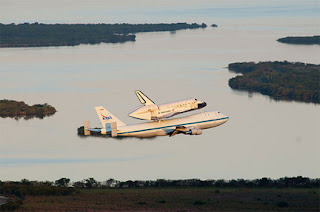Here is the latest update on the solar flare issue the CPT has been
tracking for years.
Starpulse.com
Frighteningly Enormous Solar Flare Update: White House Prepares For
Coronal Mass Ejection, Potential Catastrophic Space Weather Events
Read more at http://www.starpulse.com/news/index.php/2015/12/29/frighteningly-enormous-solar-flare-upd#d23MpBDEYteAj1Hz.99
Brad Ryder
12/29/2015 3:45am EST
12/29/2015 3:45am EST
While many people are looking back on pivotal events of 2015 -- famous deaths, terrorism, and the horse and pony Republican presidential debates -- a disturbing solar flare report is trending again.
Recently, the White House made preparations for unpredictable and severe space weather events. And much of the clamor focuses on the possibility of a catastrophic coronal mass ejection striking Earth, citing an AOL latest news story.
According to a video report, an intense solar flare narrowly missed a direct hit with Earth by a matter of days in 2012. NASA said an intense CME launched towards the planet at speeds of over 6 million miles per hour.
At that speed, it would have taken the enormous flare 13 hours or so to reach our atmosphere. Consequently, the effects would have been catastrophic. As the news journalist says, it would have thrown us back to the Ice Age, so to speak, as many power grids would have been taken offline.
In October, the Obama Administration published
the National Space Weather Action Plan, under the auspices of the National
Science and Technology Council. The scope of the 44-page document is defined as
such:
"With the objectives of improving understanding of, forecasting of, and preparedness for space-weather events (both the phenomena and their effects), the National Space Weather Strategy defines six strategic goals to prepare the Nation for near- and long-term space-weather effects."
"With the objectives of improving understanding of, forecasting of, and preparedness for space-weather events (both the phenomena and their effects), the National Space Weather Strategy defines six strategic goals to prepare the Nation for near- and long-term space-weather effects."
NASA describes solar flares or coronal mass ejections as huge bursts of energy that launches materials from the sun. If the Earth's orbit takes it into the path of the solar mass; the results can be disastrous for a race highly dependent on electronic technologies.
One scientist painted an ominous picture of what
could have occurred had the planet suffered a direct hit from the solar flare
three years ago.
"If it had hit, we would still be picking up the pieces."
Here's putting things in perspective: Space meteorologists and teams of experts agree that the 2012 solar flare could have caused widespread damage and psychological effects to the tune of $2 trillion. Comparatively speaking, based on the sun's recent volatile activity, officials fear a cataclysmic solar flare that is 1,000 times larger. The costs are immeasurable.
Doomsday thinkers say the White House report telegraphs a message that human life may be on borrowed time, that a space storm capable of mass extinction is brewing. No credible sources are reporting such extreme Earth events. However, one has to wonder why federal authorities are mulling the idea.
This story is developing.
"If it had hit, we would still be picking up the pieces."
Here's putting things in perspective: Space meteorologists and teams of experts agree that the 2012 solar flare could have caused widespread damage and psychological effects to the tune of $2 trillion. Comparatively speaking, based on the sun's recent volatile activity, officials fear a cataclysmic solar flare that is 1,000 times larger. The costs are immeasurable.
Doomsday thinkers say the White House report telegraphs a message that human life may be on borrowed time, that a space storm capable of mass extinction is brewing. No credible sources are reporting such extreme Earth events. However, one has to wonder why federal authorities are mulling the idea.
This story is developing.
.




















































